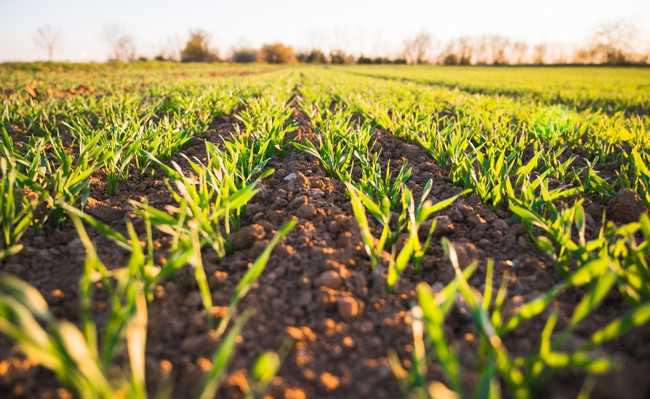What is syntropic agriculture?
Syntropic agriculture is a proposal for reading ecosystems that is different from the conventional model

Ines Álvarez Fdez Unsplash image
Syntropic agriculture is the term given to an agroforestry farming system based on the concept of syntropy. It is characterized by organization, integration, balance and preservation of energy in the environment. This agricultural aspect seeks inspiration in the natural dynamics of ecosystems that have not suffered human interference for sustainable management.
Development of syntropic agriculture
Syntropic agriculture was conceived and spread by farmer and researcher Ernst Götsch in 1948. While working with research in genetic improvement, Ernst began to question whether it was more sensible to improve the living conditions of plants, rather than genetically altering them to to survive nutrient shortages and suboptimal climatic conditions. Thus, it began to redirect its work towards the development of sustainable agriculture.
Ernst Götsch arrived in Brazil in 1982 and two years later acquired the “Fugidos da Terra Seca” farm, located in Bahia. The property is known as “Olhos D’água” farm, due to the number of springs that were recovered through the syntropic work developed.
In this system, the plants are cultivated in intercropping and arranged in parallel lines, interspersing species of different sizes and characteristics, aiming at the maximum use of the land and taking into account the maintenance and reintroduction of native species. The temporal cycle of the consortia is also a fundamental factor for the good functioning of this model, as well as the understanding of the ecological succession mechanism in an unmodified forest.
The general idea of syntropic agriculture is to accelerate the process of natural succession using two techniques: selective weeding, removing native pioneer plants when mature, and pruning trees and shrubs, then distributing them over the soil as fertilizer, providing greater availability of nutrients to him.
Chemical or organic products that do not originate in the cultivated area are also not used in syntropic agriculture. The insects and living organisms that populate the cultivation areas are seen as signs of deficiencies in the system and help the producer to understand the needs or failures of that crop.
In a conventional crop, as the planting and harvesting cycle takes place, the soil will degrade and lose its nutrients. In syntropic agriculture, however, the opposite happens, as the planting cycles occur, there is an enrichment of the soil due to the availability of organic matter remaining from the crops.
Practical principles of syntropic agriculture
High biodiversity
The high diversity of plant species is a hallmark of syntropic agriculture. The choice of species that make up the system follows the dynamics and logic of natural succession. The consortia must be quite diversified, containing species from all the successional stages, on their way to the climax of the natural vegetation of the place. The good functioning of the agroecosystem is closely linked to the complete composition of the consortia, which makes it possible to take advantage of the vertical and horizontal spaces and the beneficial interactions between species.
Species are selected to fulfill different functions in the system, not just for economic return, as in conventional crops. Some species are introduced to provide services to the agroecosystem, such as the production of biomass for covering or fertilizing the soil.
Studies show that the diversification of production systems is favorable to the natural biological control of pests, reducing herbivorous insect populations and making it difficult to locate host plants for these insects.
Stratification
In syntropic agriculture, instead of competing, species cooperate with each other if planted at the correct time and space. The moment refers to the principle of succession. Space, on the other hand, is related to the demand for light of each species in its adult phase, making it occupy a certain position in natural forests.
Stratification, understood as the occupation of the vertical space of the agroforestry, is the strategy to eliminate the competition for light between plants. The vertical position that each species occupies in an agroforestry consortium is determined based on its physiological and morphological characteristics, such as light requirement, height and life cycle.
Thus, the species are classified into strata called low, medium, high and emerging, the last being the top of the agroforestry. Agroforestry is planned to have, at each stage of its life, plants occupying the different strata.
Stratification allows for greater occupation of the area, maximizing the use of sunlight by plants and increasing photosynthesis and biomass production per area. In addition to eliminating competition for light, stratification favors cooperation between species. The most light-demanding species should occupy the upper positions of the agroforest, while those that tolerate or prefer shaded environments benefit from the coverage provided by plants in the upper strata.
Succession
The succession proposed by Ernst Götsch is summarized in the establishment of successive consortia, being necessary to understand the spatial and temporal dynamics of species under natural conditions. In each consortium, it is recommended that plants that belong to different strata and that have different life cycles and heights are introduced. Various combinations of species can be used, which will depend on market demands, the availability of seedlings, seeds and labor and the local relief and climate conditions.
ground cover
Another principle of syntropic agriculture is ground cover with the pruning of species planted for this purpose. Among the possible benefits of the contribution of organic residues to the soil, the improvement of fertility, the reduction of thermal fluctuations and water evaporation, the increase of microbial activity and the elimination of invasive plants stand out.
Benefits of syntropic agriculture
All these practical principles of syntropic agriculture tend to generate positive changes in the ecosystem, such as increased biodiversity, improved soil structure, greater retention of nutrients in the soil, changes in the microclimate and favoring the water cycle.
The model also proved to be economically viable, since production requires low investment. This happens because the area requires a minimum of irrigation and does not use chemical products in its maintenance. The intercropping of different types of species, with varying harvest times, also benefits the farmer, who constantly obtains a source of income.










